|
From the very
beginning, Jennifer wanted to come to Kyoto to visit some of the
hundreds of shrines and temples located there. But having arrived,
I had no idea how we would arrange such a thing. It was our good
fortune to find the official tourist center right outside the
Kyoto station. After we got the brochures, we headed back to the
hotel to figure out the best schedule. Almost at random, we chose
three tour packages from the
list; AS, NS and WS. |
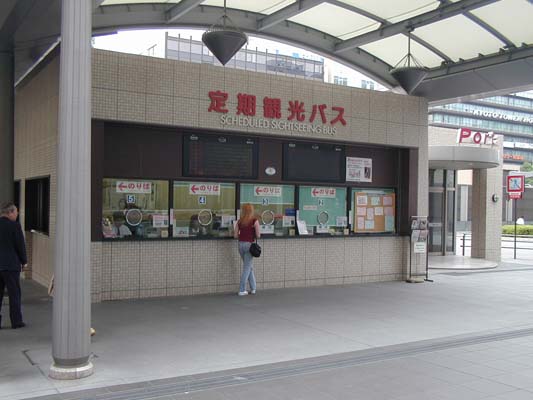 |
|
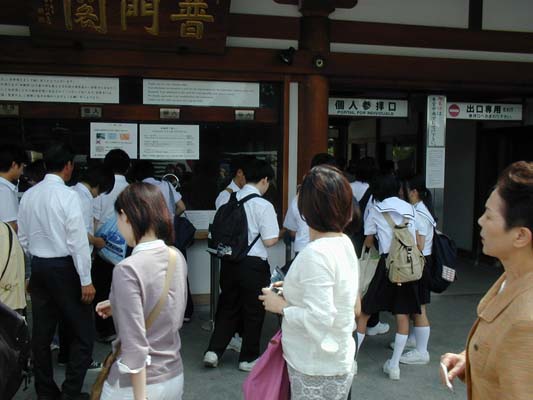 |
Our first stop was
the Sanju Sangen Do Temple. It was established in 1164. The
original temple was lost in a fire, but then rebuilt in 1266. |
|
|
The temple is about
120 meters (390 feet) long. In the picture, we are standing in
front of the temple and inside (pictured above us) are 1001
standing statues of the Buddhist deity, Juichimen-senju-sengen
Kanzeon (often just called "Kannon"). There are 500 statues to
each side and a large seated statue in the center. The 1001st
standing statue is in the back facing away from the seated statue.
It was truly a powerful experience. |
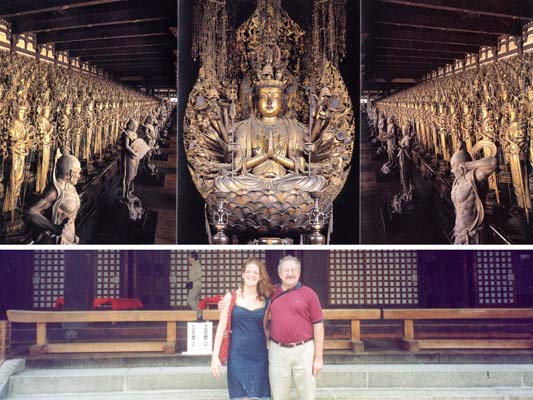 |
|
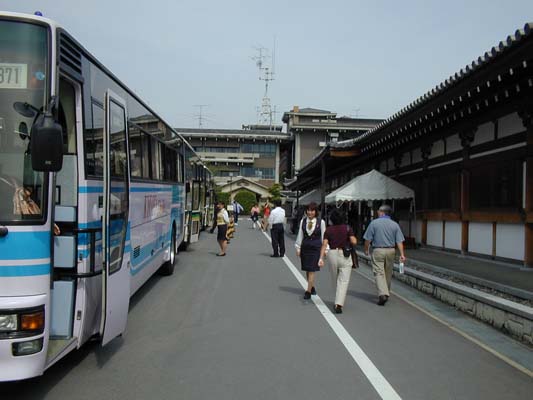 |
As we pulled into the
next exhibit you can see our tour guide walking back to the bus.
During the drive from site to site, the tour guide would give a
running description of our surroundings. Unfortunately for
us, it was completely in Japanese. |
|
|
Our next stop was the
Kinkaku-ji temple which can be seen behind us. For this tour, we
were never able to approach the temple directly, but had to view
it from a walkway that surrounded it.
This would likely be
a good time to point out that temples are Buddhist and shrines are
of the Shinto faith. |
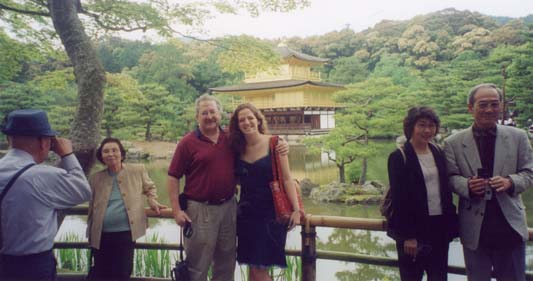 |
|
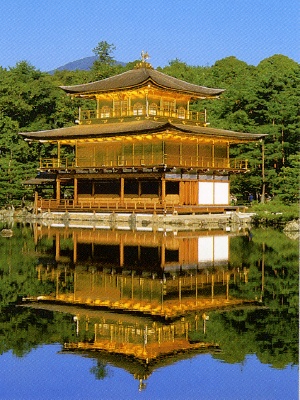 |
The Kinkaku-ji temple was
built in 1397 by the shogun Ashikaga Yoshimitsu. It was burned down in
1950 by a young man who confessed that he wanted to commit suicide with
it. The name Kinkkaku means Golden Pavilion which comes from the gold leaf
used to coat the inside and outside of the second and third floors. |
|
|
Here is an example of
Karesansui, a dry landscape garden. Patterns are raked into the
sand which are said to promote peace and harmony in the viewer. |
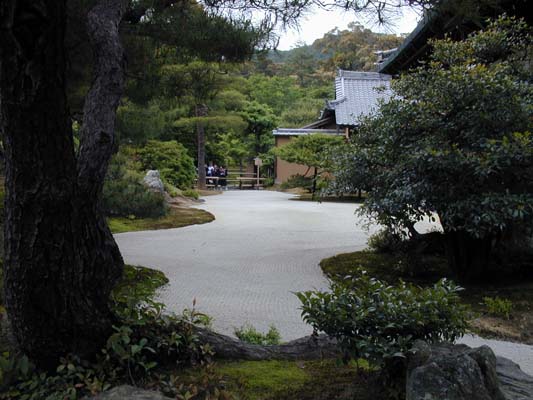 |
|
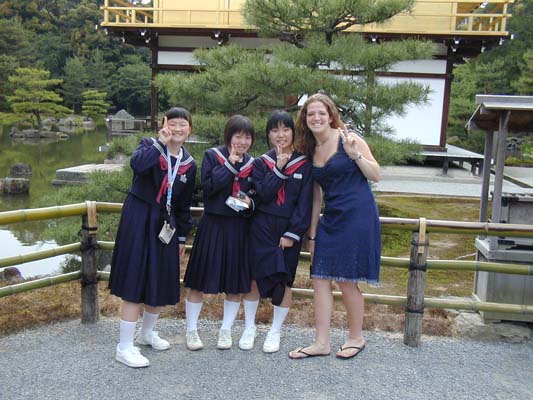 |
The Japanese students
were fascinated with Jennifer. They loved her. They would ask her
to take photographs together with them. They would talk to her,
practice English on her, compliment her on her Japanese, it was
delightful to watch. |
|